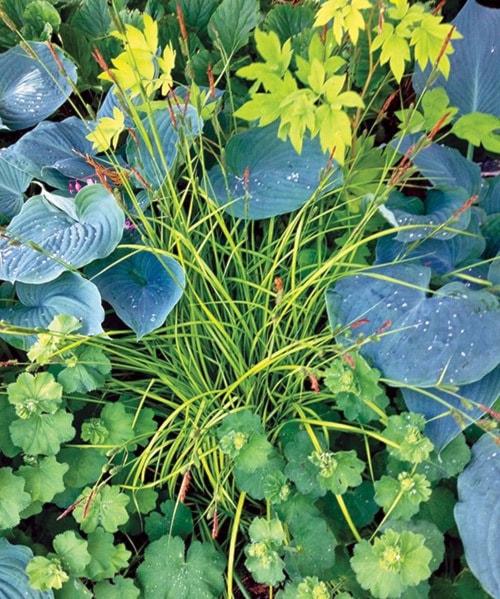I pass a house on my walk that beguiles me with its perfection. The house is from the 1930s, stuccoed, and painted in grey, white and black. The effect: chiaroscuro – the art of using light and dark to play with the eye’s attention – and attend your eye does, moving from the black roof, to the grey walls, to the black shutters and the white of the window trim.
The white makes the house look awake. The foggy grey is there, but not there: a precisely chosen backdrop to the flowers planted every spring in window boxes and on the steps – flowers so simple, but so right – brilliant red geraniums. Forgive me for this vogue verb: the flowers pop. You can’t help but see them. With all those cool tones you are irrevocably drawn to the warmth of the red.
On the avenue in front of the house, the owner again shows restraint. Set against a trim yew hedge, huddled under a municipal birch, and surrounded by fresh dark compost, are a ring of crisp white New Guinea impatiens. The implication is control. The effect is precision. And I admire it because I have no such restraint.
My garden is a collection of affections – plants I love singly and en masse. I have friends and obligations – plants raised from seed or rescued from a neighbour’s garden; plants inherited, purchased, acquired. You could say, I run an orphanage, a nursery or a farm. Or all three. I’ve tried my hand at design – even taken a semester on colour at the local college of art (where one learns words like ‘chiaroscuro’), but my training in colour hasn’t made me any more artistic in the garden. Yet.
I first tried a silver/plum palette in my front yard, resulting in some stalwart perennials that are still with me today: Hebe ‘Red Edge’, Allium sphearocephalon, Alaskan Burnet, various Heucheras and Carex ‘Amazon Mist’. But a few years on, after losses to cold sodden ground (Phormium, Melianthus, Astelia…southern hemisphere dandies, all) and feeling like the plums weren’t plummy enough, I shifted to brighter lights: the new Echinaceas, ‘Bishop of Canterbury’ dahlias, then late-blooming rusty Helenium. Helenium is, as it sounds, sunny. I had slipped along the colour wheel from plum to red and towards orange, and after that it’s an easy slide to yellow. Take it from me, ochre and plum aren’t a good mix.
Restraint, I obviously lack.
Most people do. We shop and we succumb.
If you’re designing your own garden and/or working with what you’ve got, how do you get it right? One simple answer: stay green. Focus not on flowers, but foliage. Read a plant’s tag for height and spread, and really look at the leaves. Are they a shape that will work? Glossy or matte? How high will they grow? Evaluate potential acquisitions based not on their three weeks of blooming glory, but on their year-round presence.
Picture the plant as a houseguest. Sure, there are those who make great dinner conversation, but will they be there for you in a time of need? If you only have a limited amount of room, wouldn’t you rather invite someone consistently helpful?
I’m not advocating complete austerity; that’s impossible for plant people. I’m simply suggesting that when it comes to colourful characters, you’ll be happier if you show some restraint.
Christin Geall teaches creative nonfiction at the University of Victoria and is an avid Oak Bay gardener.
